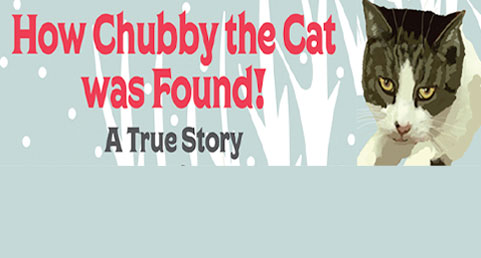Why do cats purr?
by Emma Stenhouse Feb 08, 2021
There’s something soothing about sitting with a purring cat, but do you know the reasons behind that distinctive vibration?
It’s commonly thought that cats purr when they’re happy and content. While this is true, it’s not the whole picture. Cats actually purr for a variety of different reasons. Before we find out what those are, let’s look at the exact mechanism that allows cats to make that noise we all know and love.
How do cats purr?
The mechanism of a cat’s purr has taken scientists a long time to figure out.
It turns out that the purr originates in the cat’s larynx or voice box — more specifically, the part called the glottis. The glottis expands and contracts, and as it does so, the air around it vibrates. And those vibrations are what we hear and feel when our cats purr. The frequency of this purr is usually between 20-30 vibrations per second.
Some wild cats like pumas and ocelots also purr, but no cat can both purr and roar. So, lions, jaguars, and tigers all roar but can’t purr. The difference is thought to be due to the hyroid bone of the larynx. Purring cats have ossified hyoids, and roaring cats have hyoid bones that are only partially ossified. Even so, the research isn’t completely clear!
Scientists are also still trying to work out exactly what triggers the purring. It’s thought that the signal for a cat to start purring comes from a neural oscillator in the cat’s brain. But it’s still unclear at what point that this is triggered and a cat starts purring.
- Cats purr when they’re happy
Cats do indeed purr when they’re happy and relaxed. If your cat is sat on your lap or chest with a blissed-out expression and half-closed eyes, you can be sure that they’re enjoying their relaxing time with their favorite person.
- Cats purr when they need something
Some cats will purr when they’re lining up at their food bowl for a snack and may combine their purr with a chirp or meow.
Researchers have found that there’s a difference between the purr that a cat makes when requesting food and when they’re simply greeting their human and asking for attention. They found that the “solicitation” purr sounds more urgent and includes a higher frequency sound.
This high-frequency element of the solicitation purr is in the range of 220-520 Hertz (Hz), which corresponds closely to the cry of a human baby at 300-600 Hz. As humans, we’re pre-programmed to respond to the cries of a baby, so when cats use their solicitation purr to request something, maybe they’re exploiting the urge that we have to provide and care for our babies. Even people who weren’t cat owners could distinguish the difference between a solicitation purr and a regular purr.
- Kittens purr to communicate with their mother cat
Kittens can purr by the time that they’re a couple of days old, and trust us, it’s an incredibly cute sound! Purring helps kittens bond with their mother cat, but it also communicates to her that each kitten is happy, safe, and well.
- Cats purr when in pain
Purring can help a cat to self-soothe, much like a child will seek out their parents for a reassuring hug when they’re hurt. Female cats also purr during the first stage of labor, and this is thought that this helps them relax and reduce pain.
- Cats purr to speed up healing
It’s been shown that the low frequency of purring creates vibrations that can help speed up the healing of bones, wounds, and tendons. Purring can even help reduce pain, make breathing easier, and reduce swelling and inflammation. The frequency of a cat’s purr has been measured from 20HZ-150Hz, a range that matches healing frequencies used in therapeutic medicine. Bone healing responds best to frequencies from 25Hz-50Hz and soft tissues to frequencies around 100Hz. It’s also good for us humans. Owning a cat can help reduce blood pressure and keep us feeling less stressed. Cat owners are up to 40% less likely to suffer from a heart attack than non-cat owners. Who knows, perhaps the soothing and healing purring of cats plays a part in that?
Emma is a freelance writer, specializing in writing about pets, outdoor pursuits, and the environment.
Feeding Kitten Food to Adult Cat
By Roland Jakob. Feb 23, 2021
While choosing the right brand and flavor of cat food can be difficult, it’s substantially easier to pick the right food for each stage of your cat’s life. Thanks to labeling requirements, pet food manufacturers are required to declare what lifestyle and age their food is intended for. Terms like “for growth” indicate that the food is designed for kittens, while “for maintenance” foods are appropriate for older cats.
What’s the Difference, Really?
Both kitten food and adult cat food are available in a wide range of flavors and textures, in both canned and dry varieties. The biggest difference between the two is their formulation. Kitten food is required to contain more fats, proteins, and calories than adult cat food. Adult cat food contains fewer calories, and often contains vitamins and minerals to aid in aging well.
The second key difference is in their availability. Whether you buy your pet food in a supermarket or a pet supply store, you’ll find a range of adult cat foods, both canned and dry. In a pinch, you can pick up a can or small box of adult cat food at a convenience store or gas station. Kitten food can be more difficult to find; even a big-box pet store will only have a few options.
Kitten Food Pros & Cons
Pros
- High in fat, calories, and nutrients
- Promotes growth and development
- Designed for easy digestion
Cons
- Limited flavors and textures
- Unhealthy for adult cats
- Not available in as many stores
Adult Cat Food Pros & Cons
Pros
- Specially formulated to maintain health
- Sold nearly everywhere
- Wide variety of flavors and textures
Cons
- Not suitable for kittens
- Can be expensive
- Brands vary greatly in quality
When to Feed Kitten Food vs. Cat Food
Veterinarians and pet food manufacturers alike recommend specially formulated kitten food for growing cats. Once your cat reaches 80-90% of his full size, you should transition to an adult formulation. Most breeds reach adult size around their first birthday; larger breeds, like Maine Coons, may not reach their full growth for 18-24 months.
Your Kitten’s Nutritional Needs
Kittens have greater nutritional needs than adult cats. Because of their size, kittens have smaller stomachs than adults. To account for that, it’s crucial to feed young cats a nutrient-dense food that provides then with what they need to grow and develop.
The three key components of cat food are protein, fat, and calories. These need to be balanced correctly for the dietary needs of your pet at every life stage.
Calories
Feeding your cat the correct number of calories balances their energy needs with their weight. A growing cat needs more calories to provide them with the boundless energy that kittens never seem to exhaust.
Once a cat reaches adulthood, maintenance is key. Adult cats are less active than kittens and naturally require fewer calories as they age. The caloric density of adult cat food is substantially lower than it is for kitten food, which helps cats remain slim as they age.
Protein
A higher protein and fat content help kittens develop their overall strength. According to the ASPCA, kittens should get about a third of their energy from protein. Kitten food usually contains 35-50% protein, whereas adult food is closer to 25-40%.
Unless your pet has a specific health concern that requires additional protein, you should stay within these ratios; extra protein does not confer any benefits.
Fats and Fatty Acids
Dietary fats are a necessary part of a cat’s diet. Omega-3s and omega-6s promote overall growth and development, while also playing a key role in many organ functions. The ratio of these fatty acids required to maintain good health changes over the lifespan of your cat.
Certain fatty acids help ease inflammation and are recommended for senior cats; others promote growth and are recommended for kittens. The Association of American Feed Control Officials requires that food labeled for kittens contains specific omega-3s—eicosapentaenoic and docosahexaenoic acids—but have no such requirements for adult food.
Vitamins and Minerals
Kittens require specific vitamins and minerals to develop strong immune systems, like vitamin E and selenium. The AAFCO’s Nutrient Profile for cat food indicates that kittens need nearly twice as much calcium as adults do. Calcium and phosphorus together build and maintain strong bones.
Some kitten foods contain other vitamins and minerals to promote good health and growth, while adult foods focus on nutrients that reduce inflammation or make food easier to digest.
Feeding Kitten Food to an Adult Cat
Because of its higher ratio of fat, calories, and protein, kitten food is typically too nutrient-dense for adult cats. Your cat may not adjust their intake to match their activity level and end up eating substantially more calories than necessary. A grown cat who eats kitten food will likely become overweight.
There are some cases when an adult cat should be fed kitten food. Certain formulations are more easily digested. A cat in poor health may need the extra nutrition provided by nutrient-rich food. In situations like these, you’ll want to speak with your veterinarian for advice before making such a drastic change to your feeding routine.
Feeding Adult Food to a Kitten
A hungry kitten is an unhealthy kitten. In their first months, kittens need a lot from their food, both in terms of volume, frequency, and nutritional content. Adult cat food simply is not formulated to meet their needs. The first few months of age a kitten needs good nutrition or can cause a number of issues ranging from decreased energy to neurological problems.
Aside from the long-term effects of a poor diet, hungry kittens are unhappy pets. Not having enough satisfying food makes anyone cranky, and cats are no exception. Even the most well-trained of kittens can become destructive—knocking things over on purpose, clawing inappropriately, meowing incessantly for more food.
Food for All Life Stages
Some pet food formulations are labeled “for all life stages” and straddle the line between cat and kitten formulas. These foods can be less than ideal, simply because they are not optimized for any particular age group. Depending on their content, they can promote obesity in adults while not fulfilling the needs of a growing kitten.
Final thoughts
You want to do right by your cat, regardless of their age. By starting with kitten food, you’re setting your cat up to be hearty and hale over their entire lifetime. Switching to adult food at the right time maintains your cat’s weight while supplementing their changing needs to mitigate signs of aging. By choosing the appropriate food for her stage of life, you’re doing the best thing possible for your cat.
The author, Roland Jakob has been an animal lover all his life, his mission is to assist in the search for the best gear to help improve the health and wellbeing of cats everywhere.
Roland Jakob visit excitedcats.com
Chubby the Cat Meets Santa at PetSmart!
Chubby the Cat and Karen went to PetSmart to meet Santa.
When Karen took a picture, Chubby thought to himself,
“I just had my picture taken with Santa!
Happy Holidays to all of my fans!”



